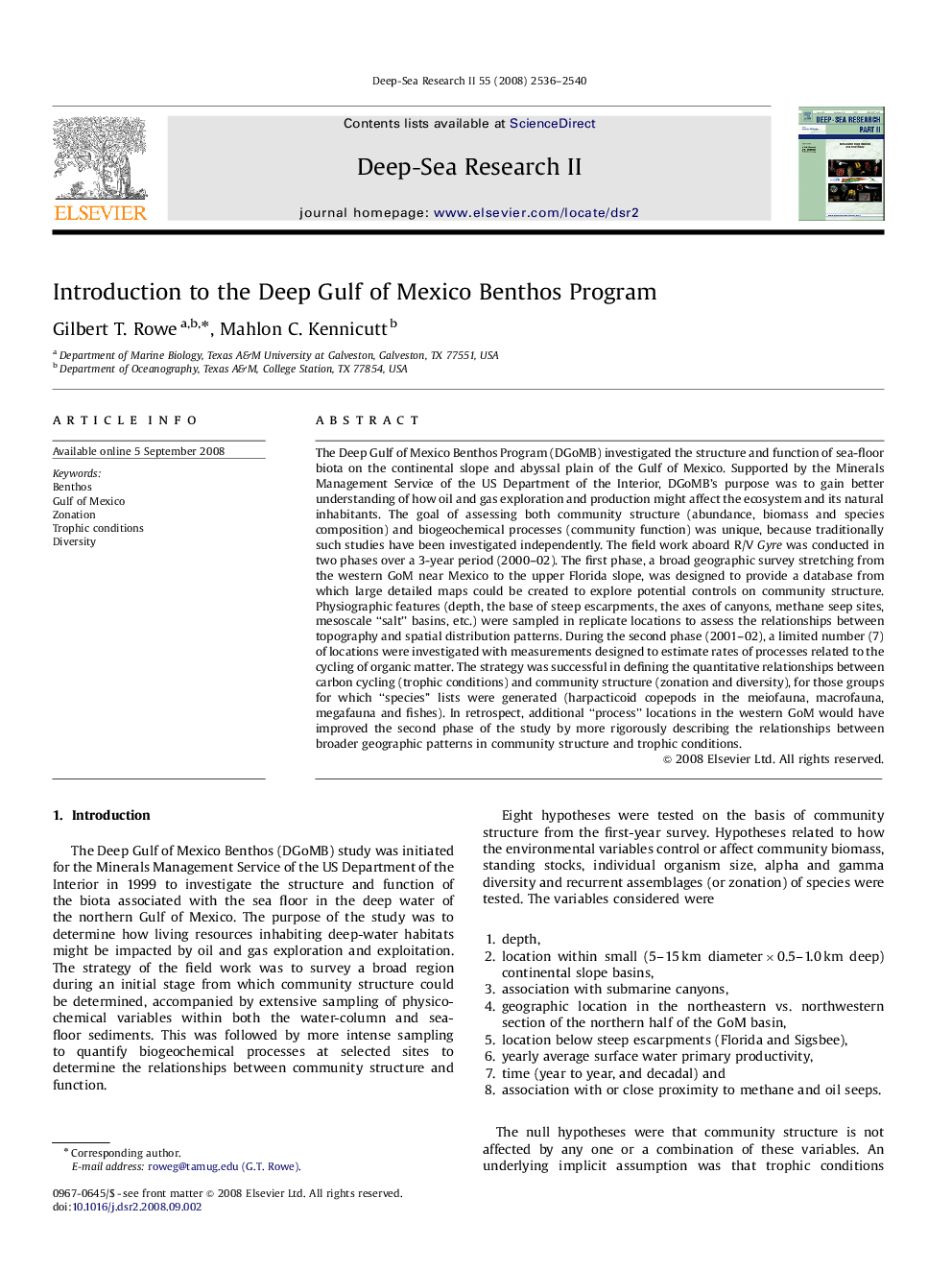| Article ID | Journal | Published Year | Pages | File Type |
|---|---|---|---|---|
| 4537134 | Deep Sea Research Part II: Topical Studies in Oceanography | 2008 | 5 Pages |
The Deep Gulf of Mexico Benthos Program (DGoMB) investigated the structure and function of sea-floor biota on the continental slope and abyssal plain of the Gulf of Mexico. Supported by the Minerals Management Service of the US Department of the Interior, DGoMB's purpose was to gain better understanding of how oil and gas exploration and production might affect the ecosystem and its natural inhabitants. The goal of assessing both community structure (abundance, biomass and species composition) and biogeochemical processes (community function) was unique, because traditionally such studies have been investigated independently. The field work aboard R/V Gyre was conducted in two phases over a 3-year period (2000–02). The first phase, a broad geographic survey stretching from the western GoM near Mexico to the upper Florida slope, was designed to provide a database from which large detailed maps could be created to explore potential controls on community structure. Physiographic features (depth, the base of steep escarpments, the axes of canyons, methane seep sites, mesoscale “salt” basins, etc.) were sampled in replicate locations to assess the relationships between topography and spatial distribution patterns. During the second phase (2001–02), a limited number (7) of locations were investigated with measurements designed to estimate rates of processes related to the cycling of organic matter. The strategy was successful in defining the quantitative relationships between carbon cycling (trophic conditions) and community structure (zonation and diversity), for those groups for which “species” lists were generated (harpacticoid copepods in the meiofauna, macrofauna, megafauna and fishes). In retrospect, additional “process” locations in the western GoM would have improved the second phase of the study by more rigorously describing the relationships between broader geographic patterns in community structure and trophic conditions.
